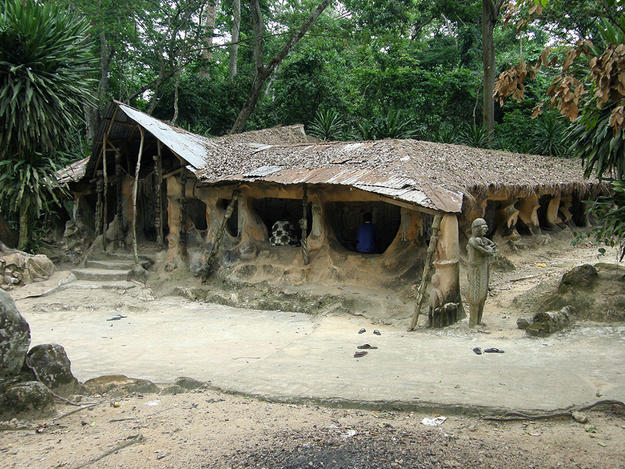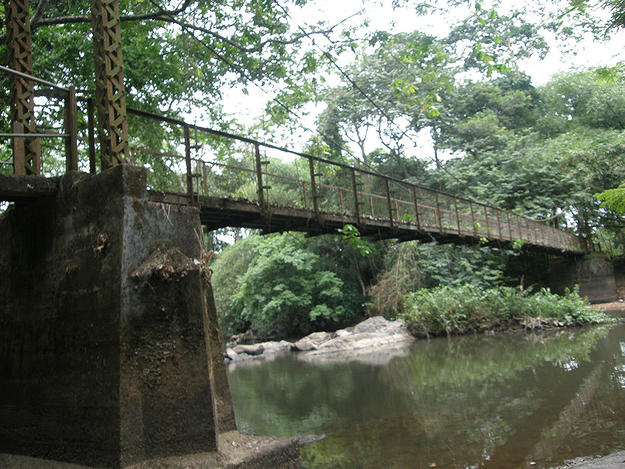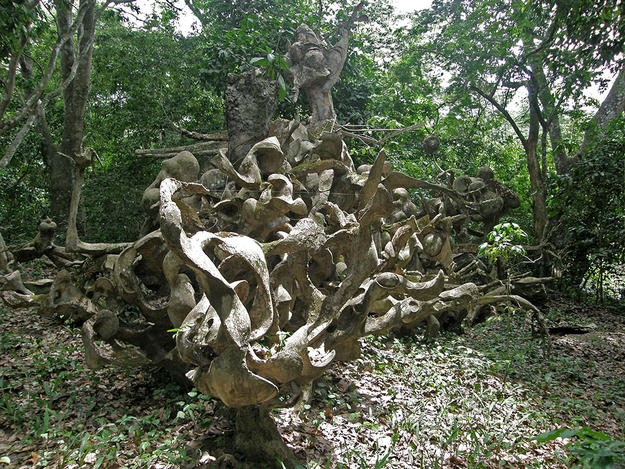Osun-Osogbo Sacred Grove
2014 World Monuments Watch
The Osun-Osogbo Sacred Grove is a large cultural landscape of undisturbed forest near the city of Osogbo in southwestern Nigeria. Dedicated to Osun, the Yoruba goddess of fertility, the area was established more than four centuries ago and is the largest of the sacred groves that have survived to the present. The Osun River meanders through the protected area, with sanctuaries and shrines erected along its course. In the twentieth century, the development of the movement of New Sacred Art invigorated efforts to protect the grove, and modern sculpture now adds to the spiritual significance of the site. This movement was led by Susanne Wenger (1915–2009), an artist and Yoruban priestess, and it transformed Osogbo into a hub of artistic activity and new ideas about contemporary African art. In 2005, the Osun-Osogbo Sagred Grove was designated a World Heritage Site.
Sacred groves used to be found near every Yoruba settlement, but their disappearance over time has made Osun-Osogbo an important reference point for Yoruba identity and the Yoruba diaspora. The historic landscape remains a place of worship and plays host to an annual festival, but by the time it was included on the 2014 World Monuments Watch it faced a number of modern challenges. The rapid growth of the city of Osogbo was causing pressure on land use that was affecting the area around the site. Additionally, the Osun River was becoming increasingly polluted and bush fires posed a continuing threat to the sacred area. The Osogbo community is strongly attached to the site, and Nigerian heritage authorities are leading efforts to raise awareness about these challenges through community activities.
Since the Watch
In January 2014, one of the shrines within the grove was restored by craftsmen who employed traditional materials and techniques in their work. During the following year various improvements were made at the site. The number of annual river cleanings increased from one to four, resulting in significant improvements in water quality, and plant regeneration and replanting projects drastically increased the diversity of tree and shrub species in the forest. Conservation management, cultural tourism, and disaster risk management plans were prepared, and a higher percentage of funds from the grove’s annual festival were allocated to conservation work.



